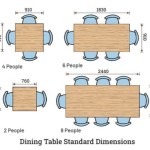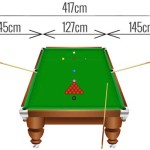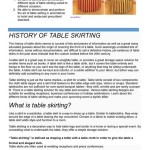4 Times Table Word Problems: A Guide for Elementary Learners
The 4 times table is a fundamental concept in elementary mathematics, laying the groundwork for more complex multiplication and division skills. Mastering this table can be a challenge for young learners, but incorporating word problems can make the process more engaging and impactful. Word problems provide a real-world context for multiplication, allowing students to see its practical applications and develop a deeper understanding of the concept.
This article will delve into the world of 4 times table word problems, exploring their benefits and providing a comprehensive guide for educators and parents. We will examine effective teaching strategies, explore diverse problem types, and offer practical examples to help students grasp the importance of this essential mathematical skill.
Benefits of Using Word Problems for the 4 Times Table
Word problems offer several advantages for learning the 4 times table, turning abstract multiplication into a tangible and relatable experience. Here are some key benefits:
- Real-World Connections: Word problems bridge the gap between abstract math concepts and everyday scenarios, making learning more relevant and engaging for students. They can see how multiplication applies to situations like counting objects, dividing items equally, or calculating costs.
- Problem-Solving Skills: Word problems encourage critical thinking and problem-solving skills. Students must analyze the information presented, identify the relevant numbers, and determine the appropriate operation to solve the problem.
- Conceptual Understanding: Word problems help students understand the underlying concept of multiplication, rather than just memorizing multiplication facts. They reinforce the idea of repeated addition and the relationship between groups and total quantities.
- Increased Motivation: By introducing variety and engaging storylines, word problems can motivate students to learn and practice their multiplication skills. They create a sense of accomplishment and boost confidence as students successfully solve problems.
Types of Word Problems for the 4 Times Table
Word problems can be categorized into various types, each focusing on different aspects of multiplication. Understanding these categories allows educators to create a well-rounded curriculum that covers all the essential concepts.
1. Equal Groups
These problems focus on the basic concept of multiplication as repeated addition, with equal groups of objects being combined.
Example: There are 4 boxes of crayons, and each box has 4 crayons. How many crayons are there in total?
2. Array Problems
Array problems involve visualizing objects arranged in rows and columns, illustrating the concept of multiplication as the product of rows and columns.
Example: A farmer plants 4 rows of apple trees, with 4 trees in each row. How many apple trees are there in total?
3. Measurement Problems
These problems incorporate units of measurement, such as time, length, or weight, to apply multiplication in real-world scenarios.
Example: A train travels at a speed of 4 kilometers per hour. How far does the train travel in 4 hours?
4. Division Problems
While not directly about multiplication, division problems are closely related to the 4 times table. These problems involve partitioning a larger quantity into equal groups.
Example: There are 16 cookies. If you want to divide them equally into 4 bags, how many cookies should you put in each bag?
Teaching Strategies for Word Problems
Effectively teaching word problems requires a multifaceted approach, incorporating various strategies to enhance student engagement and understanding. Here are some helpful tips:
- Visual Representation: Encourage students to draw diagrams or use manipulatives to visualize the problem. This can be particularly helpful for array problems.
- Read Aloud and Discuss: Read the problem aloud together as a class or individually. Encourage students to identify key information, unknown quantities, and the goal of the problem.
- Use Real-World Objects: Incorporate real-world objects into problem-solving. For example, use actual crayons and boxes to represent the "crayon" problem mentioned earlier.
- Write Equations: Guide students to write equations that represent the problem, connecting the mathematical symbols to the words they understand.
- Solve and Explain: Encourage students to solve the problem and then explain their reasoning clearly. This helps them develop their mathematical communication skills.
- Create Word Problems: Encourage students to create their own word problems, incorporating their interests and experiences. This promotes creativity and deeper understanding.
By utilizing these strategies, educators can foster a vibrant and engaging learning environment where students develop confidence and proficiency in solving 4 times table word problems. This foundation will serve them well as they progress through higher levels of mathematics.

4 Times Tables Multiplication Word Problems Teacher Made
Times Tables Word Problems 3 4 And 8 Year Cgp Plus

Multiplication Word Problems 2 By Urbrainy Com

Multiplication Word Problems Classroom Secrets

Find Blog Posts For Teaching Ideas Shared Free

Multiplication Word Problems Classroom Secrets

Times Tables Word Problems Worksheet Teacher Made Twinkl

Multiplication Word Problems 2 By Urbrainy Com

Multiplication Word Problems Classroom Secrets
Word Problems Multiplication Times Tables Edboost








